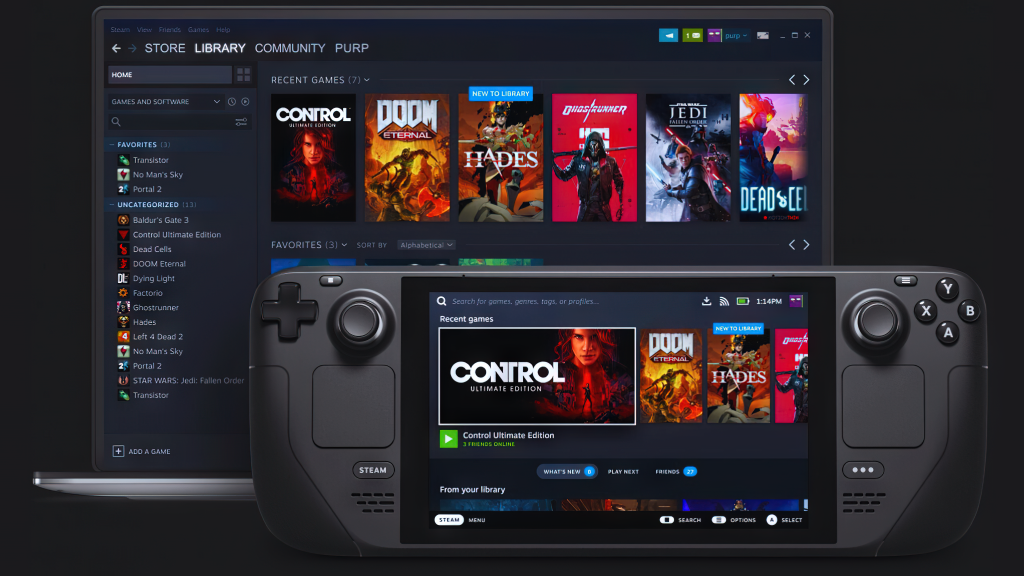Valve’s Pierre-Loup Griffais hints it might be 2025, even 2026 before a Deck 2.
Valve has expressed its desire to create a Steam Deck 2, emphasizing that a speedier handheld won’t be coming anytime soon. Pierre-Loup Griffais from Valve suggests that it might be late 2025 or later before they enhance performance, aiming for a substantial leap without compromising battery life.
Here’s the whole quote:
It’s important to us that the Deck offers a fixed performance target for developers, and that the message to customers is simple, where every Deck can play the same games. As such, changing the performance level is not something we are taking lightly, and we only want to do so when there is a significant enough increase to be had. We also don’t want more performance to come at a significant cost to power efficiency and battery life. I don’t anticipate such a leap to be possible in the next couple of years, but we’re still closely monitoring innovations in architectures and fabrication processes to see where things are going there.
He previously discussed this matter with CNBC, stating, “We’re looking at this performance target that we have as a stable target for a couple of years.” Initially, I assumed he referred to 2024, considering the Steam Deck’s release in February 2022. However, “the next couple of years” is a more extended timeframe than I anticipated. While the Steam Deck can still play recent PC games, it’s facing challenges with the latest demanding or poorly optimized games like The Last of Us Part I, Redfall, and Starfield.
(I can confirm Starfield is now playable on Deck, in a “I’m willing to tolerate terrible graphics to advance this quest” way, as of the Steam Deck OS 3.5 Preview. Griffais credits “a targeted optimization effort in the Mesa radv Vulkan driver by our graphics driver team” to support unusual features like ExecuteIndirect, explaining that Valve learned how to optimize a similar GPU-driven rendering pipeline when it added support for Halo Infinite.)
Despite this, Valve might be actively developing a refreshed version of the Steam Deck without altering the performance baseline. In the gaming industry, it’s common for console manufacturers to release compact, lighter, and more energy-efficient iterations of the same hardware. Nintendo, for instance, has refreshed the Switch twice, focusing on improvements to the battery and screen.

Improving the screen and battery remains a primary focus for both Griffais and fellow designer Lawrence Yang in a potential sequel to the Steam Deck. A new and enhanced screen could offer a perceived boost in performance, even without introducing a new chip for framerate improvements. The Asus ROG Ally serves as an example—when playing Starfield on the Ally and an Ayaneo Geek 1S, both housing similar chips, the game feels smoother on the Asus due to its variable refresh rate screen, which mitigates performance dips. Valve might also explore raising the performance ceiling, potentially incorporating a plugged-in turbo mode similar to those found in the mentioned handhelds.
Valve could explore options like having AMD reduce and optimize the same chip for improved power efficiency. It might consider upgrading the screen or increasing the battery size. Alternatively, Valve might choose to wait, and there’s speculation that Valve’s mysterious projects, Galileo or Sephiroth, could be the anticipated standalone SteamVR headset. While some theorize that Galileo might be a Steam living room PC capable of beaming graphics to a headset, Griffais recently cast doubt on that possibility.
